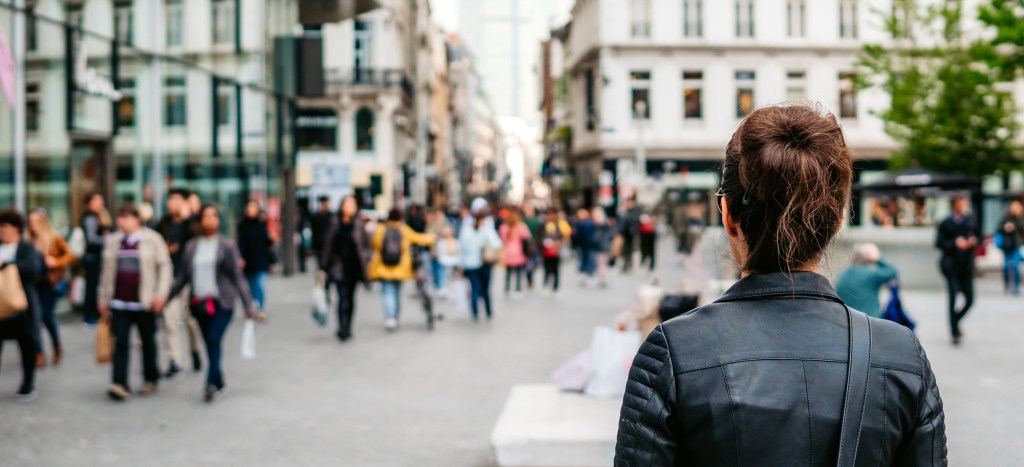It has not been an easy year for Beauty retailers. While Drug and Grocery stores have generally performed well during the COVID-19 pandemic, with many reporting record revenues, other sectors have not fared as well. And while Beauty may not have been hit as hard as sectors like Apparel, a McKinsey report predicts Beauty will end 2020 with total volume declines between 20 and 30 percent.
It is not easy to pinpoint a single factor driving these declines. Many households are tightening budgets due to the poor economy, causing them to dial back non-essential purchases. Consumers have far fewer opportunities to go out in public, reducing usage for cosmetics and other beauty products.
Beauty is also a category that does not always thrive online. McKinsey notes that prior to the COVID-19 pandemic, nearly 80% of Beauty purchases by Baby Boomers were made in-store. And even among digital native Millenial and Gen Z customers, over 75% of Beauty purchases were “store influenced” (either bought in-store or bought after browsing products in a physical store).
As Beauty retailers seek to find their footing, a focus on engaging customers will be more important than ever. Many of the core principles of personalization from other retail channels apply equally to Beauty. But there is one factor that emerges again and again in our work with global retailers that is somewhat unique to Beauty – that is the importance of customer age. Here we present three key ways every retailer should keep in mind as they engage customers, whether they are a high-end specialty Beauty retailer or a mass Drug or Grocery chain with Beauty as part of their assortment.
1. Know Your Customer Base
The first thing a retailer needs to know is the age distribution of their customers. Understanding the general demographics of Beauty customers is helpful, but knowing the details of your own customer base is much more so. It is helpful to look at this in at least two ways. First, you will want to know how your general customer population compares with the population in your market. Second, if you are a mass retailer carrying a wider assortment than just Beauty, you will want to know how your Beauty customers stack up against other customers.
The chart below shows the age distribution for a drug chain that carries Beauty products. As you can see, their core Beauty customers tend to be over 40, with Beauty purchases dropping off somewhere after age 80. While this retailer has an important strategic decision to make – do they cater to their middle-aged base, or reimagine their assortment to capture the younger customer? – understanding where they stand today is invaluable.

2. Understand How Category Needs Change Over Time
Customer shopping habits change over time in many verticals. But perhaps nowhere is this more pronounced than in Beauty. Younger customers tend to focus on cosmetics, with an emphasis on fashion trends and experimentation. As customers age, their basket shifts towards skincare products and fragrances. This also reflects an increase in disposable income…older customers tend to buy more expensive products than younger ones do.

How we use this information is critical. For retailers who run true 1-to-1 personalization programs, we always recommend that segmentation by Age should not get in the way. Sure, most people buying multiple bright colors of lipstick might be in their late teens or early twenties. But if an 80 year old woman still likes to keep up with the latest trends, there is no reason she shouldn’t receive personalized offers based on what she actually buys…not based on what her friends are buying.
However, there are many cases where 1-to-1 targeting is not possible. For example, with new or occasional customers, there is often not enough purchase history to determine the best personalized offer. In this absence of data, age can be a good guide. A category spend on makeup for younger customers and a discount on fragrance for older customers is a good bet.
3. Understand What Motivates Different Customers
Finally, it is not just product preferences that change over time. Our research also shows that price sensitivity is highly generational. The chart below shows coupon response rates for customers in a test at three different discount levels: Low, Medium, and High. While older customers were slightly more likely than their younger counterparts to respond to a coupon with a small discount when they received a large discount the response rate among older customers shot up disproportionately. This can be a great guide to Beauty retailers looking to get the most bang for their promotional dollar. It would seem that older customers can be incented to spend more if given a deep discount, while younger customers are less likely to change their behavior. Saving the high discounts for the customers who want it most can be a useful cost-saving strategy.

This is not the first time the Beauty industry has had to weather an economic downturn. It will likely not be the last. But retailers who take the time to understand the needs and motivations of their customers at different life stages will be much better positioned to weather the storm.



